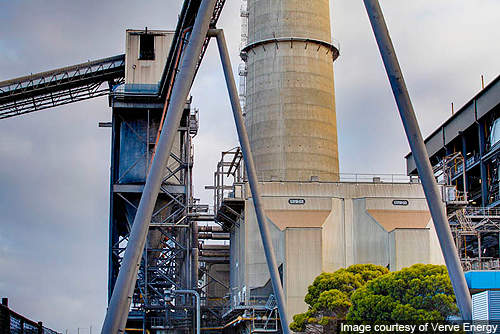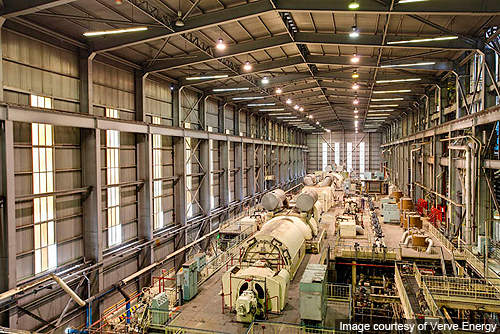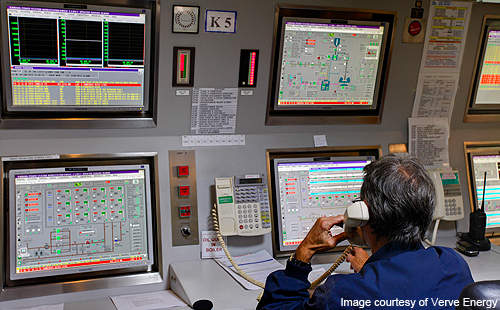Kwinana Power Station (KPS), owned by state enterprise Verve Energy, is located 40km south of Perth in Western Australia. KPS is currently undergoing an expansion for the installation of two 100MW capacity, high efficiency gas turbines (HEGT).
These turbines will replace the two 120MW stage B units, five and six, which were shutdown in December 2008.
Estimated to cost $263m, the expansion project is being funded by the Western Australian Government. The project broke ground in July 2010 and is scheduled to come online by 2012.
KPS currently has four generating units and a 20MW gas turbine, which together produce 660MW, sufficient to power 6.6 million 100W globes. It is the only power plant in Australia that has the flexibility to operate on multifuel system.
KPS is also the first power plant to adopt the Environmental Improvement Plan (EIP) in Kwinana region.
Background and history of Western Australia’s KPS
KPS was initially designed as an oil-fired plant using bunker C heavy oil. It was converted into a coal-fired plant due to the 1970s oil crisis, which led to an increase in the cost of production. Gas-firing was introduced in 1980s and oil-firing was reintroduced in 2005.
KPS was first commissioned in November 1970. It consists of six units, numbered as units one and two of stage A (2x120MW), units three and four of Stage B (2x120MW) and units five and six of Stage C (2x200MW). The total generating capacity of these six units and a 20MW gas turbine was 900MW.
Units three and four were commissioned in 1972 and 1973 respectively, with a lifespan of approximately 35 years. Both the units were designed for oil-firing but were later converted to gas-firing.
The 20MW gas turbine was added in 1972, while units five and six were commissioned during 1976-1978 and can be run on oil, gas and coal.
In 2007, Verve Energy decided to stop burning of coal for stages A and C. This, however, could not be done due to uncertainty over the gas supply and the closure of old, inefficient plants. Instead, the company decided to continue coal-firing up to 2015 and voluntarily introduced EIP, even when it was not required by the Western Australian government.
In 2009, the stage C cooling canal project was undertaken to refurbish the old water discharge pipe. Valued at $2.8m, the project was carried out by Australian engineering firm Georgiou.
Details of Kwinana power station’s expansion
The expansion project will include installation of two GE LMS100 turbines. The new turbines will have dual fuel capability (gas and oil) and will provide additional capacity to help Verve Energy maintain a constant and regular supply of electricity in Western Australia.
The two thermal generating boilers and stacks of stage B will be demolished to make way for the new HEGT turbines.
Gas will be transported through the existing 1,600km pipeline from the North West Shelf gas plant located at Karratha, while oil (low sulphur fuel oil) will be carried to the plant by road tankers or piped from a British Petroleum (BP) jetty and stored in tanks.
Involvement of Verve Energy and UGL in the government’s expansion project
The expansion project was announced by the Australian Government in May 2009. Four months later, in October 2009, Verve Energy signed the engineering, procurement and construction (EPC) contract with United Group Limited (UGL) for $190m.
UGL expects to complete the construction within two years.
Technology used at Western Australia’s Kwinana power station and grid network
LMS100 is design based on heavy-duty frame gas and aero-derivative gas turbines. It is the first intercooled gas turbine system designed by General Electric (GE) especially for the power generation industry.
It has a rated capacity of 100MW and operates at 46% efficiency levels, which are ten percent higher than GE’s simple cycle efficiency gas turbine.
LMS100 is specifically designed for cyclic applications and has features such as fast start-up, fuel flexibility, peaking capability, low hot-day lapse rate, low emissions and low maintenance costs.
KPS is connected to the South West Interconnected System (SWIS) that stretches up to Kalbarri in the north, Albany in the south and Kalgoorlie in the east.
Power is generated at 13,800v in stage A and 16,000v in stage C, which is boosted to 132,000v and 330,000v using a step up transformer.






